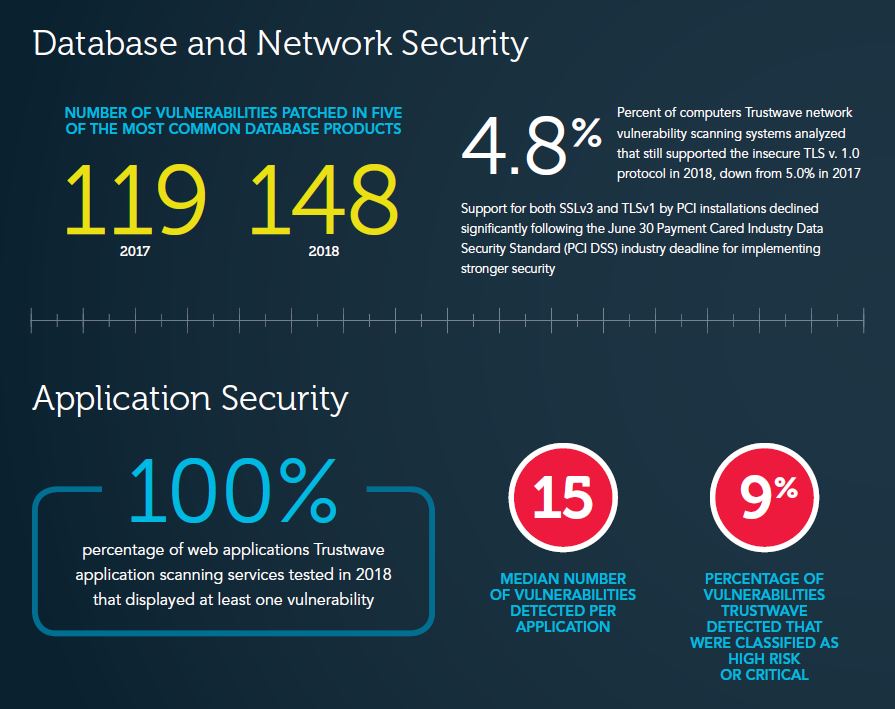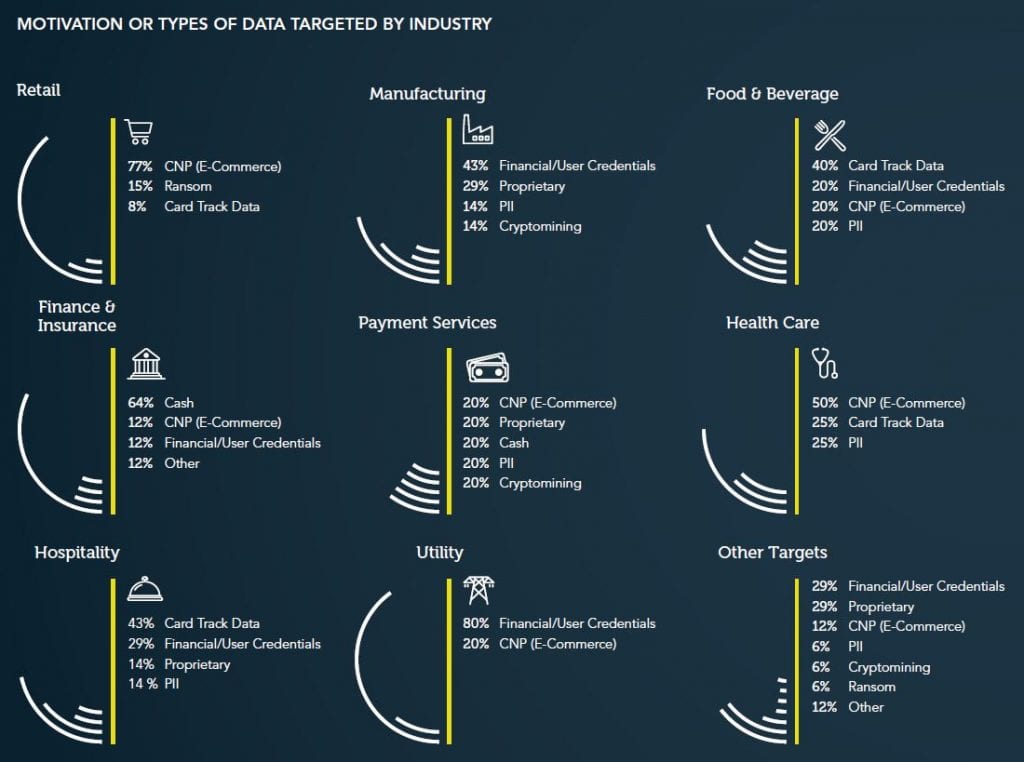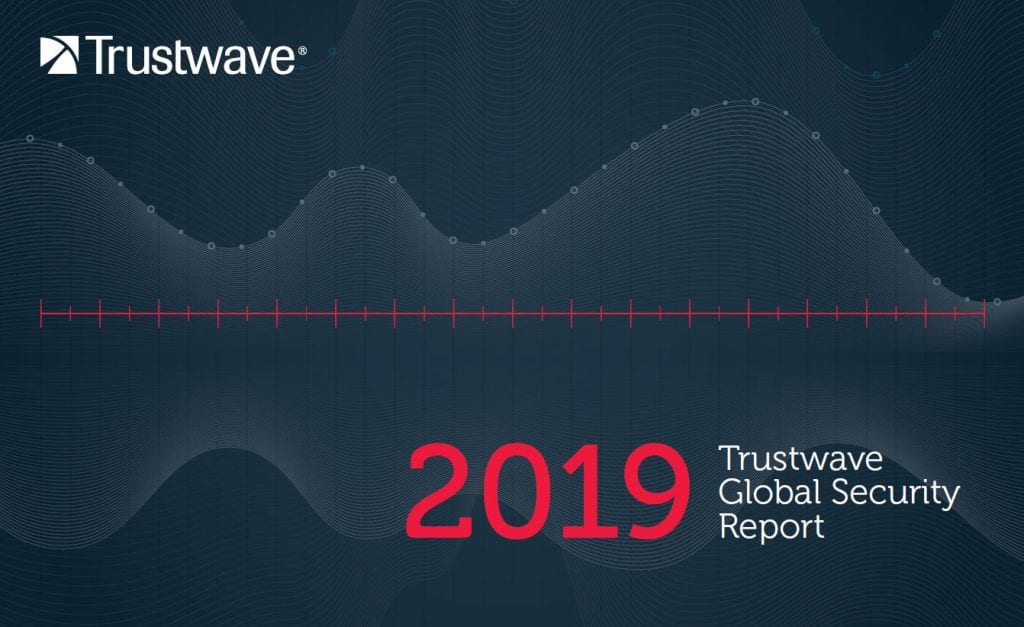The report is based on the analysis of billions of logged security and compromise events worldwide, hundreds of hands-on data-breach and forensic investigations, manual penetration tests, network vulnerability scans and internal research. Findings illustrate cybercriminals deviating towards a more focused approach against targets by using better obfuscation techniques and improved social engineering skills as organisations improve in areas such as time to detection and response to threats.

Key findings from the 2019 Trustwave Global Security Report include:
- Asia Pacific and retail lead in data breaches — The Asia-Pacific region led in the number of data compromises investigated, accounting for 35% of instances and overtaking North America at 30%, down from 43% in 2017. Europe, Middle East and Africa (EMEA) came in third at 27%, followed by Latin America & Caribbean (LAC) at 8%. The retail sector experienced the highest number of incidences at 18%. The finance sector came in second at 11% and hospitality third at 10%, each slightly dropping from 13% and 12%, respectively, from the previous year.
- Email threats becoming more focused — Spam messages analysed containing malware significantly diminished in 2018, to 6% from 26% in 2017. This drop can be attributed to a shift in tactics to shorter, more regional campaigns from Necurs, the largest malicious spamming botnet. For example, sextortion email campaigns designed to dupe victims into paying large ransoms by playing on fears that compromising videos exist on the recipient was nearly non-existent in 2017 yet rose toward the end of 2018 to account for 10% of all spam analysed.
- Malware becoming harder to detect — Slightly down from the previous year, the largest single category of malware encountered was downloaders at 13%. Remote access Trojans (RATs) at 10% and web shells at 8%, both of which give attackers extensive control over compromised computers, were the second and third most common types of malware discovered. Memory scrapers and dumpers used to steal payment card numbers from point-of-sale (POS) systems saw a sharp decline from 16% in 2017 to just 8% in 2018 as Europay, Mastercard and Visa (EMV) chip technologies become more prevalent. Sixty-seven percent of malware analysed used obfuscation to help avoid detection, an astounding leap from 30% the previous year.
- Denial-of-service tops database vulnerability patching — The number of vulnerabilities patched in five of the most common database products was 148, up from 119 in 2017. At 62%, denial-of-service (DoS) vulnerabilities used primarily for disruption accounted for the most vulnerabilities discovered across all major platforms in 2018. Far more serious information disclosure and privilege-escalation vulnerabilities used to gain unauthorised access and manipulate sensitive data accounted for 8.7% and 8.1% of patching incidents, respectively.
- Social engineering: cybercrime’s favoured method of compromise — Social engineering was the top method of compromise in 2018 in every environment analysed other than e-commerce. In both cloud and POS environments, 60% of breach investigations can attribute successful social engineering as the conduit to initial point of entry. Social engineering in corporate and internal environments were slightly less yet significant at 46%. Analysis of phishing scams targeting those with authority to transfer company funds, known as business email compromise (BEC) or CEO fraud, revealed interesting results: 84% of BEC messages used free webmail services for distribution, 12% used spoofed company domains and 4% elected to employ misspelled or lookalike domain names to deceive recipients.

- Card-not-present data most valued by cybercriminals — Payment card data led in the types of information most coveted by cybercriminals, comprising 36% of breach incidents observed. Most notable: card-not-present data at 25% rose 7% from the previous year largely due to increased Magecart attacks targeting e-commerce sites, while magnetic stripe data fell 11%, coming in at 11% of incidents observed in 2018. The decline in magnetic stripe data incidents can be correlated with increased global adoption of EMV chip technology designed to better protect POS systems.
- Marked improvements in threat response time — The median time duration from threat intrusion to containment fell to 27 days, from 67 days in 2017, and the median time between intrusion and detection for externally detected compromises fell to 55 days, down from 83 days in 2017. Adoption of technologies such as endpoint detection and response (EDR), behavioural analytics and stronger organisational security maturity helped lead to improvements.
- Cryptojacking dominates web-based attacks — A steep year-over-year increase of 1,250% was observed in cryptojacking malware, which was almost non-existent in 2017. Used to covertly place legitimate JavaScript coin miners on websites or infect carrier-grade routers, cryptojacking malware illegally mines cryptocurrency for cybercriminals using the computing resources of unsuspecting victims. In 97% of the 2,585 websites observed that were known to be compromised, the now-defunct Coinhive miner was preferred.
- All web applications found to be vulnerable — For a second straight year, 100% of web applications tested possessed at least one vulnerability, with the median number of vulnerabilities rising to 15, up from 11 in 2017. Of more than 45,000 vulnerabilities discovered by Trustwave penetration testers, 80% were classified as low risk, with the remaining 20% deemed medium to critical. The most common critical weakness involved omission of Microsoft Security Update MS17-010, which fixes the ETERNALBLUE vulnerability in the Server Message Block (SMB) protocol used for local network communication.
- Corporate and internal networks at most risk — Fifty-seven percent of the incidents investigated involved corporate and internal networks (up from 50% in 2017), followed by e-commerce environments at 27%. Incidents impacting POS systems decreased by more than half to just 9% of the total occurrences reflecting EMV use as a successful technology.
“Our 2018 findings portray a story about adaptiveness, both from a business and cybercriminal perspective,” said Arthur Wong, Chief Executive Officer at Trustwave. “We are seeing the global threat landscape continue to evolve as cybercriminals deterred by advanced monitoring and detection systems go to extraordinary lengths to breach organisations by wielding new malware variants, zero-day exploits and social engineering savvy. It’s becoming imperative for businesses accelerating digital transformation to implement security programs that can quickly address attack innovation and ever-changing environments through leading-edge technologies and high-level security expertise.”
Data Sources
Trustwave experts gathered and analysed real-world data from hundreds of breach investigations that the company conducted in 2018 across 19 countries. This data was added to billions of security events logged each day across a global network of Trustwave Advanced Security Operations Centers, along with deep analysis of tens of billions of email messages; tens of millions of web transactions; thousands of penetration tests across databases, networks and applications; and telemetry from both native and partner technologies distributed across the globe.

